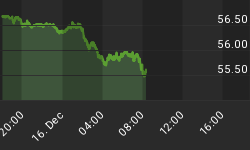Discover Magazine runs a monthly back-page feature called "20 Things You Didn't Know About..." that usually lives up to its title. In a recent issue the subject was money, and some of the factoids are worth noting. See 6, 7, and 8.
20 Things You Didn't Know About... Money
-
No escape: As you file your taxes this month, you can take solace in knowing that the ritual dates back almost 5,000 years, to a time when Egyptians started paying taxes in goods and labor.
-
Collecting taxes became a lot easier after Egypt and Mesopotamia began using silver and gold bars as currency, around 2500 B.C.
-
Unfortunately, the invention of money also made theft a lot easier. Consequently, temples became the first banks because they were sturdy, frequently visited, and intimidating to would-be thieves.
-
But did they offer subprime mortgages? By 1750 B.C., Babylonian temple priests had branched out into issuing loans to locals.
-
Back then they didn't need bailouts. Founded in Italy as a pawnshop in 1472, the Banca Monte dei Paschi di Siena is the world's oldest surviving bank.
-
Paper money originated in China in the year 910 and amazed Marco Polo when he visited three centuries later. He also noted that the emperor, Kublai Khan, seemed to be printing an awful lot of notes...
-
...which ultimately wrecked the economy. Due to skyrocketing inflation caused by churning out so much money, paper bills had to be abolished in China in the 15th century.
-
Return of the funny money: The expense of the U.S. Civil War inspired the government to introduce paper "greenbacks" in July 1861.
-
All the U.S. coins and bills in general circulation today have a total worth of about $829 billion.
-
Two-thirds of that cash is held overseas.
-
Filthy lucre: In a study last year, researchers found more cocaine residue on U.S. bills than on any other currency. Also found on money: staphylococcus bacteria and fecal matter.
-
That may explain why, for a period around 1916, you could carry your cash to Washington, D.C., to have it washed, ironed, and reissued.
-
The paper used for U.S. bills isn't made from trees. Rather, it contains 75 percent cotton and 25 percent linen.
-
To foil counterfeiters, the latest $5 bill design has an embedded security thread that contains more than 650,000 tiny glass domes. They create an optical illusion that the Mint hopes is almost impossible to duplicate.
-
He left home without it: In 1949 Frank X. McNamara took friends to dinner in New York City but forgot to bring his cash. He vowed never again to be so embarrassed and so created the Diners Club Card, the first credit card.
-
The Diners Club Card was initially made of cardboard. It listed the 14 participating restaurants on the back and had an annual fee of $3.
-
Scottish inventor John Shepherd-Barron built the world's first true ATM for a Barclay's Bank in North London in 1967.
-
The machine was based on the concept of a chocolate bar dispenser.
-
Plastic cards did not yet exist, so Shepherd-Barron's ATM accepted only checks laced with identifying traces of radioactive carbon-14.
-
Once a distinctively radioactive check was detected, customers entered their four-digit PINs. Shepherd-Barron claimed users "would have to eat 136,000 checks" for the radioactivity to have any dangerous effects.
BUY OFFSHORE GOLD AND SILVER AT GOLDMONEY
















